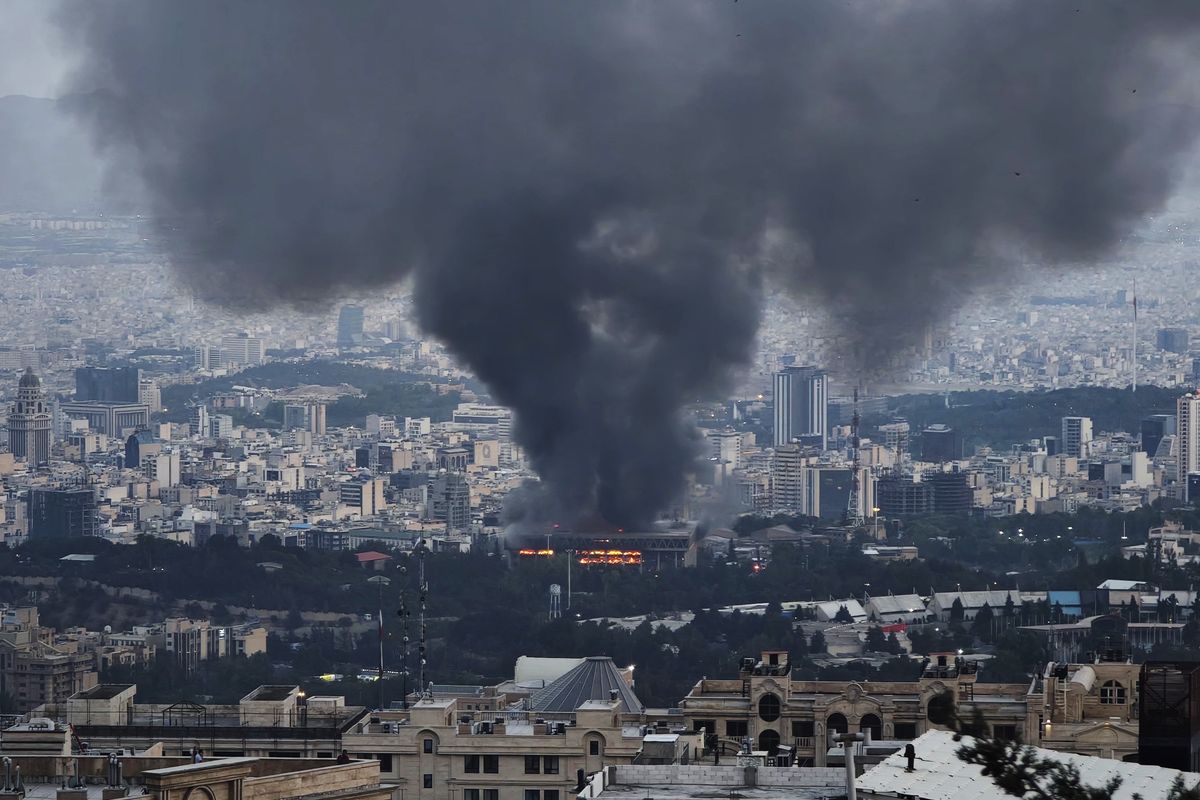President Barack Obama spent much of his last State of the Union address dwelling on domestic issues, but he also pointedly reminded Americans that the United States is the most powerful nation on earth. Our commander-in-chief acknowledged that it’s still a dangerous world out there but pinned that on failing states, not evil empires.
It’s true that the United States does not face the kinds of existential threats that propelled us into an arms race with the Soviet Union. Together, we topped out (in 1986) at 63 thousand nuclear weapons. Thankfully, both the United States and Russia managed to back away from the nuclear precipice. Still, the 10 thousand remaining nuclear weapons are enough to irradiate pretty much the entire planet.
Even as President Obama in 2009 held up the vision of a world free of nuclear weapons and began a process of reducing reliance on such weapons, the United States also embarked on a $350 billion nuclear weapons modernization program over the next 10 years, providing powerful proof that the weapons of mass destruction (WMD) threat from states is still out there. Russia, China, Pakistan, and India are also spending heavily to modernize their nuclear arsenals and, in the case of Pakistan and India, to expand their arsenals.
Although terrorism and cyber threats dominate headlines with good reason—they have the ability to affect the everyday lives of Americans—the recent North Korean nuclear test demonstrated the allure that weapons of mass destruction still hold for many states. Weapons of mass destruction—especially nuclear weapons paired with ballistic missiles—are the ultimate deterrent to conventional aggression. We know that our own nuclear weapons may be worthless to fight terrorists or cyber threats, but they sure are helpful when it comes to deterring other states with WMD. The B-52s flying from Guam on a northwestern trajectory over South Korea this week were a none-too subtle reminder to North Korean leader Kim Jong Un of the role that WMD play in supporting the United States as the “most powerful nation on earth.”
Therefore, it was not surprising that in last year’s annual report to the Senate Armed Services Committee, Director of National Intelligence James Clapper described WMD as “a major threat to the security of the United States, its deployed troops and allies.” He also declared that “the time when only a few states had access to the most dangerous technologies is past.” The real culprit? Globalized economies and the free flow of people. Clapper’s list of WMD threats from states included Iran, North Korea, China, Russia, and Syria, for its chemical weapons use. Inexplicably, India and Pakistan were left off the list, but this may be because the WMD threat they pose is mostly to each other.
The United States obviously worries about WMD capabilities that threaten the U.S. homeland (Russian and Chinese ICBMs, for example) and U.S. troops abroad (any combination of missiles, nuclear, chemical, or biological weapons) but also, importantly, those that threaten our allies. WMDs have a destabilizing effect on regional security. For this reason, the United States has been the leader for decades in efforts to stem the flow of WMD proliferation as technologies become more widely available. The nonproliferation regime includes separate treaties addressing nuclear weapons, chemical weapons, and biological weapons, as well as a web of voluntary export control groups that monitor and limit equipment and technology trade.
Three of the countries in the DNI’s report pose specific challenges to the nonproliferation regime: Iran, because it violated its obligations under the Nuclear Nonproliferation Treaty (NPT) and managed to amass materials that could have been relatively quickly converted into nuclear weapons; North Korea, because it dropped out of the NPT and has continued to expand and enhance its nuclear weapons arsenal; and Syria, because it violated a long-standing norm against the use of chemical weapons against its own citizens. Russia is on the list because it is developing a new cruise missile that the U.S. believes is a violation of the historic 1987 Intermediate Nuclear Forces Treaty, and China, which for decades was content with a minimal deterrent force, appears to be enhancing the survivability of its ICBMs.
Absent from General Clapper’s report was the potential witches’ brew of failing states and WMD. In listening to President Obama's 2016 State of the Union address, it would be tempting to conclude that failing states mostly pose the threat of spawning terrorist groups that seek the comfort of ungoverned spaces. But they also breed opportunities for illicit transfers of WMD-related material and equipment, even if only as transfer points, weakening the nonproliferation regime. Finally, the case of states like Pakistan and North Korea that may teeter on the brink of failing while in possession of nuclear weapons and missiles, is the ultimate nightmare scenario, not just for the United States, but for the world at large.











